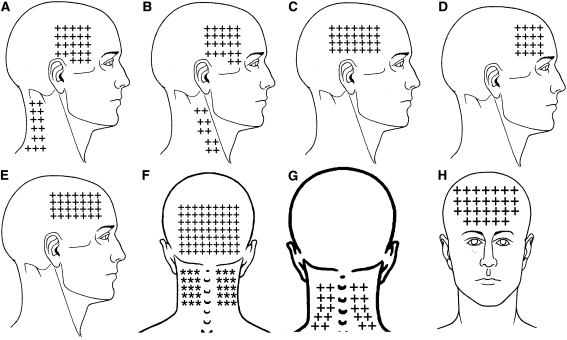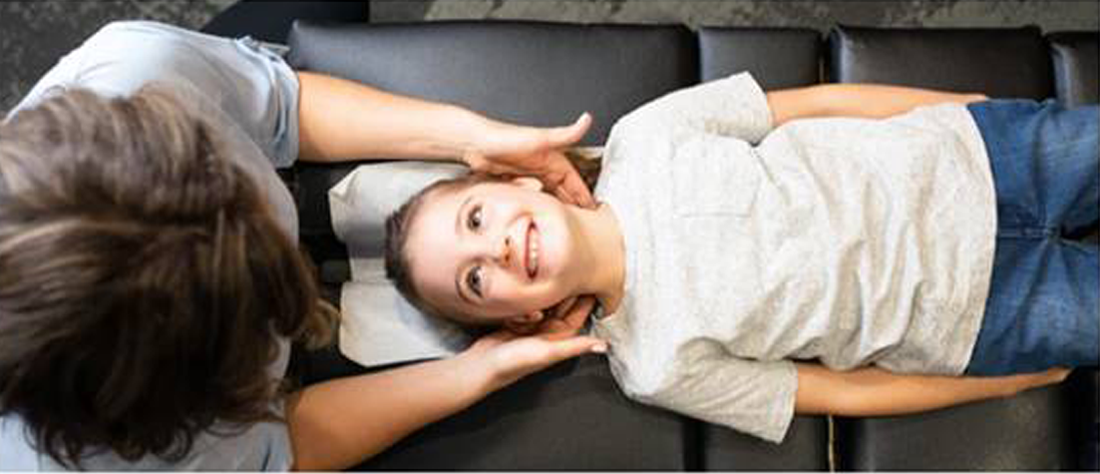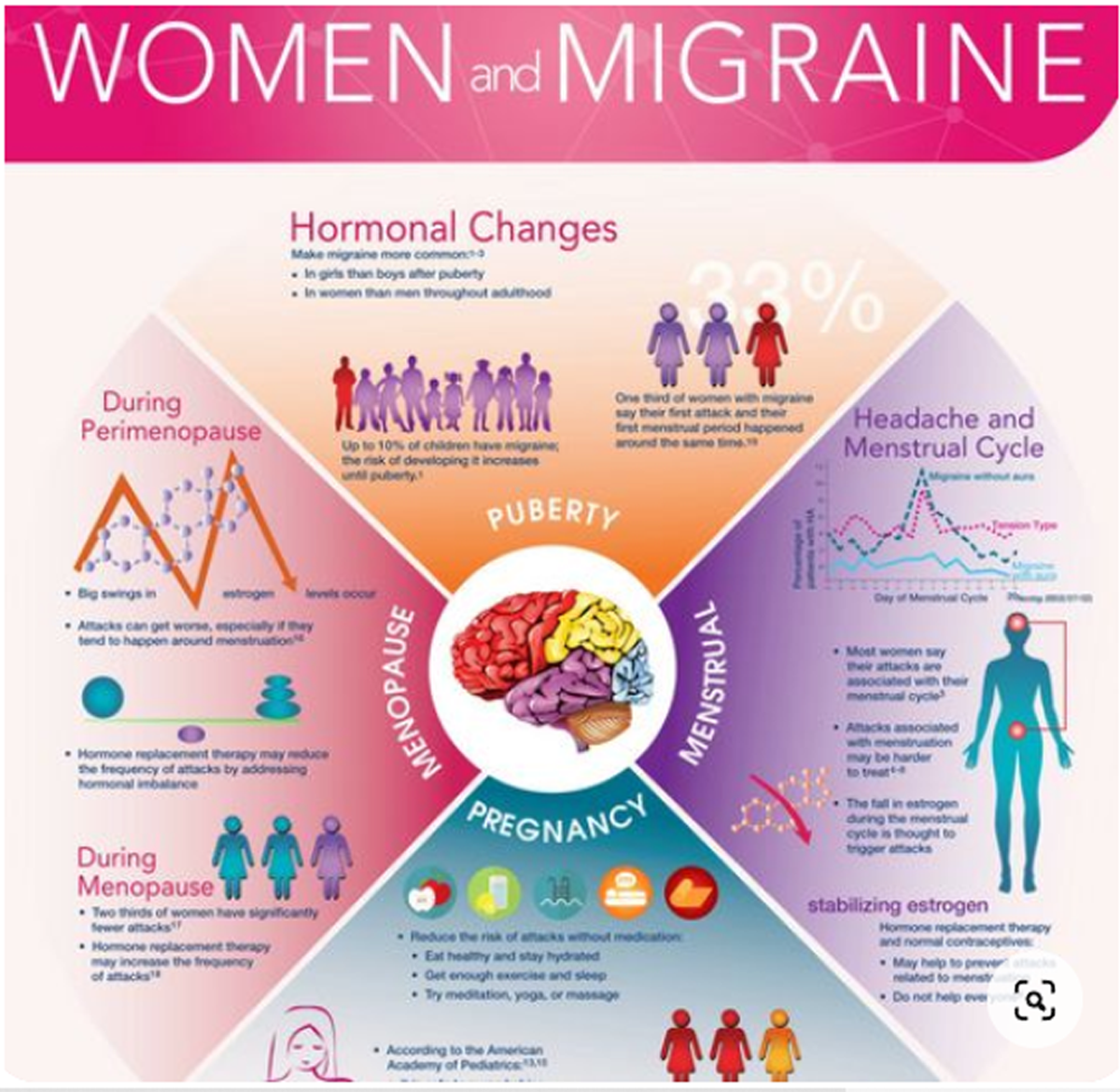Referred Pain from Myofascial Trigger Points in Head and Neck-shoulder Muscles Reproduces Head Pain Features in Children With Chronic Tension type Headache
SOURCE: J Headache Pain. 2011 (Feb); 12 (1): 35–43
César Fernández-de-las-Peñas, Daniel M. Fernández-Mayoralas, Ricardo Ortega-Santiago, Silvia Ambite-Quesada, Domingo Palacios-Ceña and Juan A. Pareja
Department of Physical Therapy,
Occupational Therapy,
Rehabilitation and Physical Medicine,
Facultad de Ciencias de la Salud,
Universidad Rey Juan Carlos,
Avenida de Atenas s/n,
28922 Alcorcón, Madrid
Our aim was to describe the referred pain pattern and areas from trigger points (TrPs) in head, neck, and shoulder muscles in children with chronic tension type headache (CTTH). Fifty children (14 boys, 36 girls, mean age: 8 ± 2) with CTTH and 50 age- and sex- matched children participated. Bilateral temporalis, masseter, superior oblique, upper trapezius, sternocleidomastoid, suboccipital, and levator scapula muscles were examined for TrPs by an assessor blinded to the children’s condition. TrPs were identified with palpation and considered active when local and referred pains reproduce headache pain attacks. The referred pain areas were drawn on anatomical maps, digitalized, and also measured.
The total number of TrPs was significantly greater in children with CTTH as compared to healthy children (P < 0.001). Active TrPs were only present in children with CTTH (P < 0.001). Within children with CTTH, a significant positive association between the number of active TrPs and headache duration (r (s) = 0.315; P = 0.026) was observed: the greater the number of active TrPs, the longer the duration of headache attack. Significant differences in referred pain areas between groups (P < 0.001) and muscles (P < 0.001) were found: the referred pain areas were larger in CTTH children (P < 0.001), and the referred pain area elicited by suboccipital TrPs was larger than the referred pain from the remaining TrPs (P < 0.001). Significant positive correlations between some headache clinical parameters and the size of the referred pain area were found. Our results showed that the local and referred pains elicited from active TrPs in head, neck and shoulder shared similar pain pattern as spontaneous CTTH in children, supporting a relevant role of active TrPs in CTTH in children.
There are more articles like this @ our:
Chiropractic Pediatrics Section
and the:
KEYWORDS: Chronic tension-type headache, Trigger points, Referred pain, Children
From the Full-Text Article:
Introduction
Tension-type headache is the most common form of headache in both adults [1] and adolescents. [2] Different studies have reported an overall prevalence rate for tension type headache ranging from 5.5 to 26% in children between 6 and 12 years old. [3–6] In a recent epidemiological study in Germany, the 6–month prevalence of headaches was 53.2% among children from 7 to 14 years. [7] In fact, Lewis et al. [8] estimated that about 20% of the children with primary headache need medical therapy. Furthermore, as tension type headache is also problematic for children, this headache needs further study. [9, 10]
Although there has been an increasing interest in the pathogenic mechanisms of tension type headache, the true patho-anatomical mechanisms remain inconclusive. [11]
It seems clear that hyper-excitability of peripheral and central nociceptive pain pathways plays an important role in tension type headache [12], as several studies have demonstrated the presence of pressure pain hyperalgesia in children with tension type headache. [13–15]
Nevertheless, it has been postulated that tension type headache-related pain may be originated, at some extent, from referred pain from muscle trigger points (TrPs) located in head, neck and shoulder muscles. [16, 17] Myofascial/muscle TrPs are usually defined as the hypersensitive spots in a taut band of a skeletal muscle that elicit a referred distant pain upon examination. [18] From a clinical point of view, TrPs may be active or latent. Active TrPs are those which both local and referred pain reproduce pain symptoms and the pain is recognized as a usual or familiar pain by the subjects. In tension type headache, active TrPs are those reproducing pain symptoms similar to those the patients perceive during their headache attacks.
Read the rest of this Full Text article now!







Leave A Comment